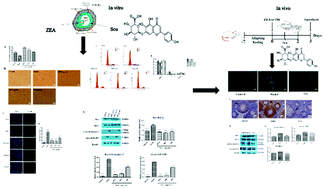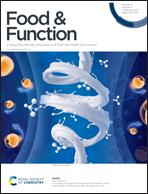Scutellarin protects mouse ovarian granulosa cells from injury induced by the toxin zearalenone
Abstract
Zearalenone (ZEA), present in animal grain feed is produced by Fusarium fungi and this toxin targets ovarian granulosa cells (GCs) to cause reproductive disorders in female animals. Current research on drugs that can rescue ZEA-induced ovarian GC damage is limited. The purpose of this study was to explore the effect of scutellarin (Scu) on ZEA-induced apoptosis of mouse ovarian GCs and its mechanism. In one set of experiments, the primary cultured mouse ovarian GCs were co-treated with ZEA and Scu for 24 h. The results showed that Scu significantly alleviated ZEA-induced cell damage, restored cell cycle arrest, and inhibited apoptosis by reducing the ratio of cleaved-caspase-3, cleaved-PARP, and Bax/Bcl-2. In another set of experiments, six-week-old mice were intragastrically administered with 40 mg kg−1 ZEA for 2 h, followed by 100 mg kg−1 Scu for 3 days. It was observed that Scu inhibited ZEA-induced apoptosis and positive signal expression of cleaved-caspase-3 in the ovarian granulosa layer, with the involvement of the mitochondrial apoptotic pathway. These data provide strong evidence that Scu can be further developed as a potential new therapeutic drug for preventing or treating reproductive toxicity caused by the exposure of animals to ZEA found in the grains of animal feeds.



 Please wait while we load your content...
Please wait while we load your content...